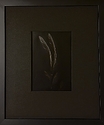NortheastPhotographic
Advertiser
First, are the development times for replenished D-76 the same as with straight D-76?
Second, since I can't buy D-76R I will make it myself. There is an article out there that states that if I want to start a replenished solution, I should not use a Kodak store bought mix. Any truth to this? Wouldn't be a deal breaker, but I happen to have some Kodak D-76 on hand and would rather just use it.
Second, since I can't buy D-76R I will make it myself. There is an article out there that states that if I want to start a replenished solution, I should not use a Kodak store bought mix. Any truth to this? Wouldn't be a deal breaker, but I happen to have some Kodak D-76 on hand and would rather just use it.










